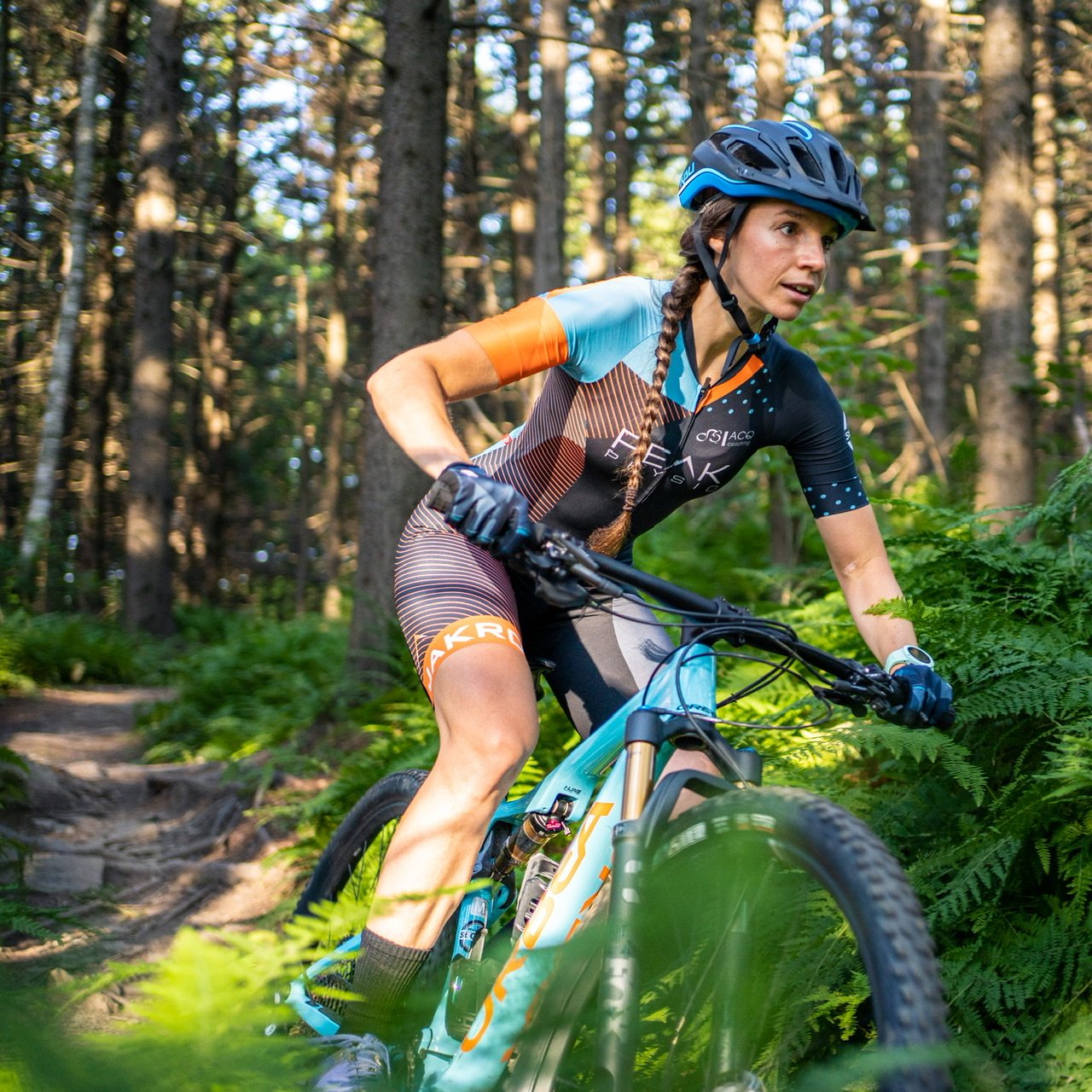Carolyne Guay / Athlete, physiotherapist and owner of PEAK Physio Sutton
Carolyne Guay
With the temperature dropping below zero degrees Celsius, darkness at 4:00 pm and the first snowflakes arriving, many cyclists are making the transition to indoor training on some form of trainer from the comfort of their homes. Even if you are riding the same bike as you did outside and you were comfortable on your bike during the hundreds of kilometers you rode during the summer, you have to realize that there are subtle differences between riding outside and inside. Here are a few tips to avoid discomfort and ensure a smooth transition to indoor winter cycling.
ONE- Make sure your bike is level.
When positioning your bike on the training base, the first thing to do is to make sure it is level. If the bike is tilted, either forward or backward, the rider's weight may not be optimally distributed on the three support points (handlebars, pedals and saddle) which could cause pressure points on one of these three supports, resulting in discomfort and/or numbness.
To do so, make sure that the distance between the front axle and the ground is the same as the distance between the rear axle and the ground, to within a few millimeters.
TWO- Position your screen properly
If you train with an online platform or like to watch videos during your training, it is important to position your screen properly. If the screen is too high, it could cause neck pain and/or numbness in your hands.
a. The neck should be in line with the back when looking at the screen
b. Arms should be relaxed and slightly bent
THREE- Change your position often
When we ride outside, we often change our position on the bike; we ride standing on steeper climbs, we change the position of our hands on the handlebars (in the "drops" for descents, on the hoods on the flat or simply on the horizontal part of the handlebars for some seated climbs). However, indoors, our position is much more static than outdoors, which can cause discomfort and injury over time. Be sure to change positions frequently. When indoors, feel free to stand up more often, change the position of the saddle, change the position of your hands, etc.
FOUR- Make sure you have the right equipment
Wear good cycling shorts even indoors, even if you don't ride for more than an hour, because as mentioned in point 3, the position is much more static on the training base.
If you ride with gloves in the summer, you can wear them even indoors, as this will prevent friction on your hands, often caused by perspiration.
To avoid getting too hot and dehydrated, use a good fan and bring plenty of water when you train. Indoors you sweat as much, if not more, than outdoors.
FIVE- Add some education to your workout
In order to add a little spice to your training, to break the monotony of pedalling on a fixed base and to promote good neuromuscular development of your pedal stroke, include some educational exercises in your training.
a. Work on the 360 degree pedal stroke.
b. Work on the accuracy and consistency of a given power output without looking at your power meter.
c. Keep the same power when changing positions.
d. Vary pedalling cadences
i. Low cadence (75-80rpm) to build muscle strength.
ii. High cadence (110-120rpm) to develop leg speed (important not to "jump" on the saddle at high cadence, stay in control).
Fortunately, PowerWatts workouts are filled with games and technique drills that will help you focus on these skills and become a better cyclist.
SIX- Give yourself at least 1 rest day a week
With the basics of home training, getting to your bike has never been easier, so it's tempting to jump on board whenever you have an hour to kill, participate in numerous group sessions per week and participate in several virtual races. However, it is very important to listen to your body and give yourself at least one day of rest per week to recover physically and mentally.
Each week, the ideal is to take a day of complete rest in addition to a day of active rest where you can move, but without working intensely.
We hope that these tips will help you have fun, be comfortable and remain effective during the winter season!
Carolyne Guay / Athlete, physiotherapist and owner of PEAK Physio Sutton

